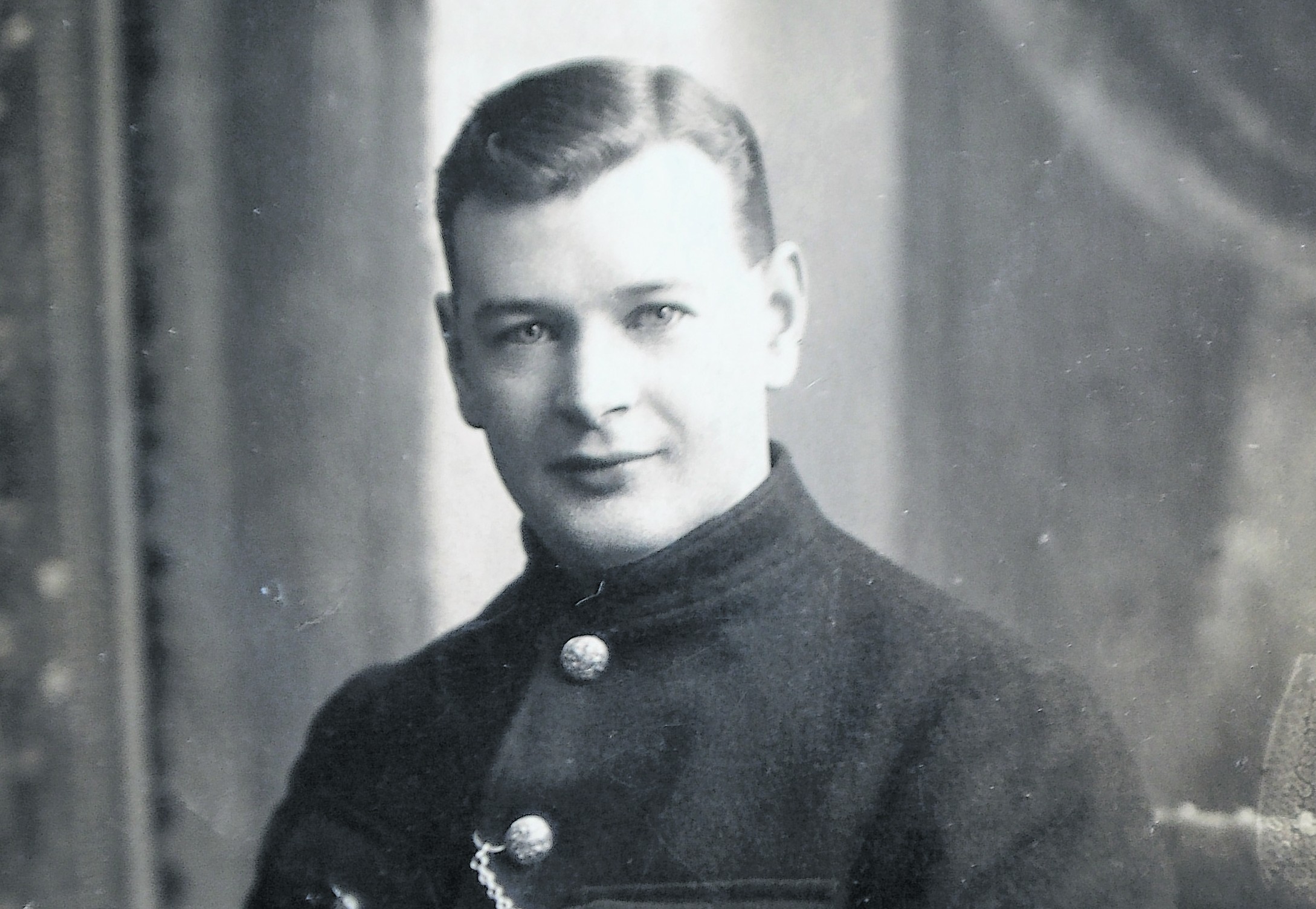“It was the lesser of two evils,” Kenneth Willox said while describing the experiences of his father as a prisoner of war (POW) in the latter years of World War I.
It’s not somewhere someone would want to be, but it probably saved his life, he said.
Kenneth Willox sen was born in New Deer in 1892 and started his working life at the age of 14 as an apprentice to a watchmaker in his home village. He was working in Banff at the time when, like so many young men his age, his life was interrupted by the war.
It is not known whether Kenneth sen volunteered or was called up, but he joined the Royal Field Artillery as a gunner. It was sometime in 1916 when he was captured and taken far across the country to a prisoner of war camp in Bayern.
“I don’t know a lot about his capture, but I believe it was sometime near the Battle of the Somme,” Kenneth jun explained.
“He was taken by a cattle train down to the deep south of Germany, to Bayern. I remember as a young boy seeing a letter from the war office with a photograph of my father and his rank on it stating he was missing in action or presumed dead. So his mother would have thought he was dead for some time.”
It was only after the Red Cross was allowed into the camp and arranged for soldiers to send letters home that Kenneth sen’s mother learned the truth about what had happened to him.
A letter he sent home to his mother through the charity, as well as a score of photographs and other correspondence, were discovered by Kenneth jun after his father died aged 88. He had kept them in the attic although he never spoke about his experience during the war.
While the conditions of the POW camp were unknown, Kenneth jun did learn that food was scarce and his father, a healthy 11 stone when he entered, dropped to six-and-a-half stone due to the dire conditions.
“Because of their eating habits, a lot of the soldiers caught dysentery,” Kenneth jun explained. “When the Red Cross came in, they tried to help the soldiers and started to feed them pasta to fatten them up. So my father became a bit of a roly-poly after that, he went from one extreme to the other.”
Like many POWs in other countries, the Germans soon made the prisoners work as part of their capture. For Kenneth’s father, he was sent to a watchmaker’s family in Kronach to help.
“They asked all the prisoners what their skills were and when they asked my father he said he was a watchmaker. They took him to this family and they asked him to do a couple of tasks. I think it was a sort of test because anyone could say they were a watchmaker, but then they realised that he actually was.”
His father worked for the family for 14 months and from what Kenneth jun has discovered, he became more than just a prisoner to them.
“They treated him like a son,” he said. “They were very good to him. He lived with them for a while, I don’t know if he had to go back to the camp every so often.
“I think POW camps were very different to what they were like in World War II. My father used to say to me that he got on well with the Germans, he used to say they are just like us: they were just fighting like all the troops were.”
After the war ended, Kenneth sen returned to the north-east but never forgot about the family who had treated him so well.
For more than four decades, he corresponded with the German family and even sent them food parcels.
In 1931, the gunner returned to Kronach to visit the family he had lived with during his capture and his visit even made the news.
“The local paper did a story about his visit,” Kenneth jun said.
“The report said that Kenneth Willox from Aberdeen, Scotland, being a prisoner of war, had come back to visit the people he had been seconded to. And the basis of the report said it just shows you that war is terrible but friendship goes on forever.”
Many years later, Kenneth jun made a similar trip to his father and visited the watchmaking shop where his father had spent the latter years of his capture.
He said it was an emotional experience for all involved.
“Only one member of the family my father knew was still alive and this old woman still lived in a flat above the shop. They were still watchmakers.
“They took me upstairs to meet her and she became quite emotional. She remembered my father and said to me ‘your father was a good worker’.
“It was quite interesting to see that and they showed me the workshop where my father had worked and spent the latter half of his captivity.
“I mean it was good in the sense that he was able to go back to his old trade. And it took him away from the front. That was the lesser of the two evils to be quite honest with you. He managed to escape that slaughter that was going on at the front. He was lucky to escape in a way because after he was captured there were massive battles like Paschendale which were absolutely horrific.
“So working as a watchmaker helped him survive really.”
